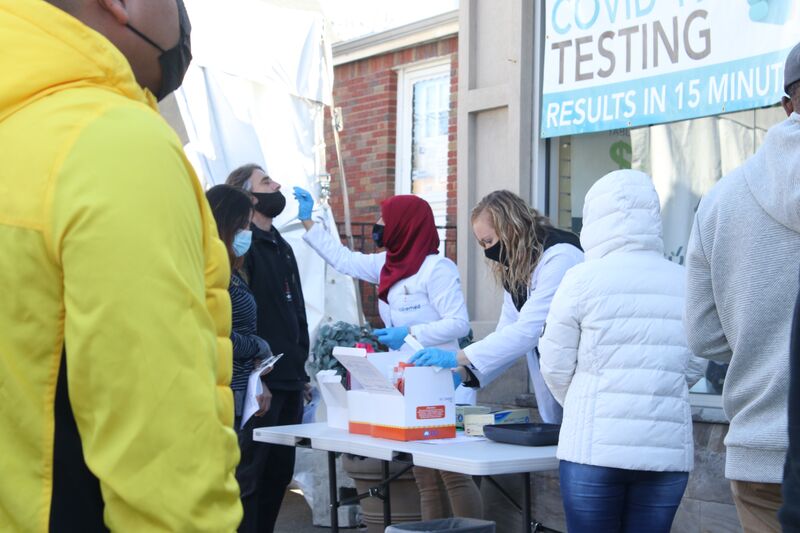
For many, 2020 was supposed to be a fresh start. It represented the beginning of a new decade, and I am sure it meant different things to different people. None of us could have expected a pandemic nor anticipated all that came along with the spread of COVID-19. Certainly though, as we wrap up the last month of 2020, it is easy to say that this year has been full of lessons (for better or worse).
Disability’s new spotlight
Considering one in five people have some kind of disability, the topic was noticeably absent from major news headlines prior to the pandemic. Representation and discussion of disability is crucial for a number of reasons. COVID brought disability to the front of many people’s minds. For one, its symptoms vary person to person but may affect major life activities such as breathing, taste and smell. While the symptoms may go away for some patients, for others, the symptoms may result in a permanent disability. From personal experience, I can say that the pandemic slowed things down enough for me to notice something was wrong. I was able to get diagnosed with a disability because I had enough time to check in on myself and fix what was happening. Another way disability was spotlighted was because of the way the pandemic has affected the disability community. People with disabilities are more likely to experience negative side effects from COVID. Since disability can affect all aspects of life, it comes as no surprise to see more headlines about people with disabilities: from job loss all the way to an increased risk of death due to disability. On a brighter note, a common disability headline that made the news was the 30th Anniversary of the ADA’s passing. Like I said, for better or worse, people are talking about disability now more than ever.
Increase in accessibility
A common lesson I teach in my trainings is that increasing accessibility for people with disabilities increases access for all. The pandemic brought to attention ways in which access to certain systems was a challenge (if not impossible) for the disability community. In order to accommodate needs of people with disabilities, as well as those without, we have seen increases in accessibility across the board. Access to the workplace, healthcare, voting, webinars, websites, and more has changed significantly as the world must spend more time online and less in-person.
Working from home
For many people both with and without disabilities, accessibility has increased within their very own workplace. The Equal Employment Opportunity Commission says that telework is a form of reasonable accommodation under the ADA. Before the pandemic, working from home (WFH) was not a common dinner table topic. Now, forty-two percent of the U.S. labor force is working from home full time. However, telework has been found to increase employment opportunities for many workers, especially for employees with disabilities. One check for a disability headline, two checks for accessibility!
Telehealth
Since the onset of COVID-19, telehealth has evolved into the most common standards of health care. In order to accommodate CDC and state restrictions, there had to be a way to provide safe healthcare without risking virus exposure to patients. The pandemic has led to increases in depression, anxiety, substance abuse, to name but a few. What is more, people with certain respiratory disabilities or chronic illness are at higher risk of contracting the virus. For this reason, telehealth has expanded accessibility to healthcare for many. In a recent research study conducted by our center, there were a number of benefits found from the increase of telemental health for people with disabilities.
Voting
With the 2020 presidential election, there was much discussion about risk of infections and voter suppression. While it may be too early to know about the disenfranchisement, there were numerous stories about how to reduce the risk of infection that led to an increase in accessible voting. An unusual election year certainly made for unusual expansion of voting options. And yet again, for every step taken in accessibility, we learned about barriers encountered by voters with disabilities.
Webinars
Ah, the era of Zoom meetings. No one is likely to forget anytime soon the countless hours spent with coworkers in meetings or with friends in virtual happy hours. There have been leaps and bounds in accessibility since so much business is now conducted via online platforms. There are tips and tricks to making accessible documents, presentations, and more. For webinars open to the public, businesses are learning about live captioning and translators.
Take improvements in stride
At the end of the day, while there have been great leaps in accessibility, there remains much to be done. 2020 was the year of ups and downs. And just like this year, disability has seen a lot of wins with several losses. If you would like to learn how to make your business, website, documents, presentations (and more) accessible, I highly suggest heading to our online course catalog. There, you will find several courses on how to reduce barriers for people with disabilities.